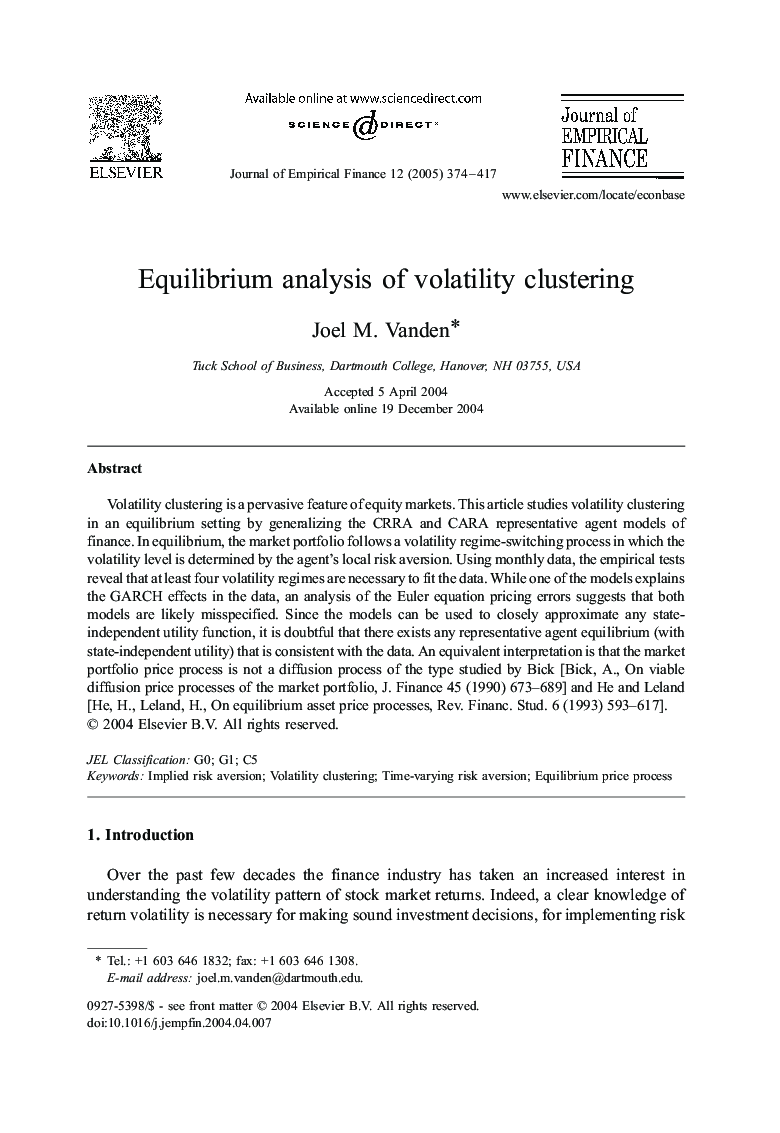| Article ID | Journal | Published Year | Pages | File Type |
|---|---|---|---|---|
| 10475165 | Journal of Empirical Finance | 2005 | 44 Pages |
Abstract
Volatility clustering is a pervasive feature of equity markets. This article studies volatility clustering in an equilibrium setting by generalizing the CRRA and CARA representative agent models of finance. In equilibrium, the market portfolio follows a volatility regime-switching process in which the volatility level is determined by the agent's local risk aversion. Using monthly data, the empirical tests reveal that at least four volatility regimes are necessary to fit the data. While one of the models explains the GARCH effects in the data, an analysis of the Euler equation pricing errors suggests that both models are likely misspecified. Since the models can be used to closely approximate any state-independent utility function, it is doubtful that there exists any representative agent equilibrium (with state-independent utility) that is consistent with the data. An equivalent interpretation is that the market portfolio price process is not a diffusion process of the type studied by Bick [Bick, A., On viable diffusion price processes of the market portfolio, J. Finance 45 (1990) 673-689] and He and Leland [He, H., Leland, H., On equilibrium asset price processes, Rev. Financ. Stud. 6 (1993) 593-617].
Related Topics
Social Sciences and Humanities
Economics, Econometrics and Finance
Economics and Econometrics
Authors
Joel M. Vanden,
